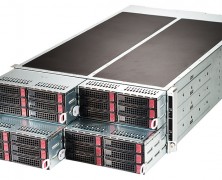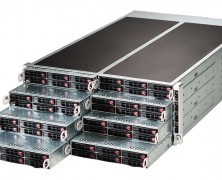It’s that time of year again. The time of year where I thank vendors for sucking slightly less than their competitors over the previous 12 months. Some do this through product excellence, some through excellence in customer service. As a rule, I find vendors trying, and so I take an almost absurd amount of pleasure in reminiscing on those that, in one form or another, make the grade. To this end, I will start the year’s festivities with a joke about how to define how “ready” a product is for general consumption. Google ready: 4 years, 3 PhDs and an army of undergrads later it runs in 30 datacenters on 5 continents, but only two people know how. Hyperscale ready: with a trained $1M/yr specialist and a support team of 5 it will support 50,000 clients at 99.95% uptime. Enterprise ready: with a team of 20 certified technicians, 4 middle managers and a vendor engineer it will integrate with our mainframe. SMB ready: one of the two burnt out husks that were people remembers enough about how it works to restart it. Trevor Pott ready: issues reduced to one 4:00am phone call per annum. So without further delay, here is my totally biased list of 2016’s kickass vendors that have made my own personal life easier: Scale Computing Scale Computing make hyperconverged appliances. Servers (3 or more) with built-in storage that work together to allow virtualized workloads to achieve high availability without needing a SAN. Scale’s solution is built on top of KVM and uses their own custom software for monitoring, self-healing, management and a user interface. Scale doesn’t expose nearly as many of the hypervisor’s features to the user as rivals like VMware. From one perspective, this means that Scale is nowhere near...
Supermicro, VSAN and EVO:Rail
posted by Trevor Pott
Supermicro and VMware have released a new generation of VMware EVO:RAIL appliances and VMware Virtual SAN Ready Nodes. The arrival of the new Supermicro servers is occurring alongside the release of VMware’s vSphere 6.0 suite, which is VMware’s most important release in several years. Combined, the Supermicro and VMware launches are more than simply an incremental improvement and serve as an exceptional showcase for the power and flexibility the modern software defined datacenter is capable of delivering. The 2015 generation of Supermicro servers that have been specially designed with VMware’s VSAN and EVO:RAIL in mind are the 2U TwinPro² and the 4U FatTwin series servers. Supermicro’s various partners have led the industry in delivering hyperconverged solutions using previous generations of Twin series servers. Lessons learned there, combined with the increased capability of the next generation of VMware software, have driven the design of the next generation Supermicro Twin series servers. Increments of change A generational change can occur either because a major feature is introduced, or through a series of iterative implements that, combined, result in a significantly superior product. The 2015 Twin series servers have done both. Supermicro hasn’t simply relied on evolving standards and new generations of equipment being made available by upstream partners. The quality of Supermicro servers (which Supermicro feels was already quite good) has been significantly improved. Supermicro is constantly working with customers and partners to identify design elements that need improvement, and the 2015 servers are the result of many such changes. The most notable incremental improvement will be found in the addition of Supermicro’s Titanium Level high-efficiency digital power supplies (more detail below) and architecture designs that improve airflow for optimal cooling. In addition to these green computing improvements, the rail kits have undergone several design tweaks...
Supermicro FatTwin
posted by Trevor Pott
The design concepts underpinning the Supermicro FatTwin are something I would hold up as “game changing.” The reasons why are explored in a review I wrote for The Register a while back, but the product is so good it’s worth expanding that review a little. Free from any real editorial constraints, I think it’s time to take a bit of a wander through what this equipment can actually mean to a systems administrator. So what’s a FatTwin anyways? A FatTwin is a brand name used by SuperMicro to describe their latest in dense-but-powerful server offerings. Two dual-processor servers per U, 4 U per chassis for a total of 8 2P servers in a 4U enclosure. There is no shared backplane for networking or other system components. The only thing shared by the chassis is power. This drives the cost of the chassis down so that if you are paranoid and want a spare chassis on the shelf you can probably afford it without breaking the bank. Isn’t a shared power plane a single point of failure? Yep; a shared power plane is a single point of failure. If you somehow manage to tank the shared power plane in the chassis you will not be able to light up half of the nodes. One failure and half of the systems go. The shared power plane is an intermediate step between single-everything as would be found in entirely discrete systems, and shared-many-systems as is found in blade servers. A typical blade backplane has hundreds of individual traces; a myriad of single points of failure that could go wrong. When compared to blades, the choice of “shared power only” offers simplicity; it has the bare minimum of traces and just carries power. The result is that the power backplane on...



